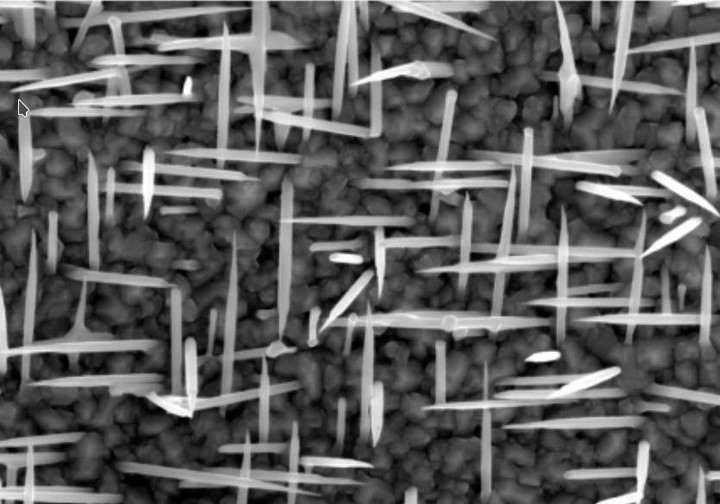Nanowire optics
 Forest of nanowires grown in InP substrate
Forest of nanowires grown in InP substrate
This was my PhD project in Nantechnology Institute of Lyon in 2010 - 2013. This project was focused on experimental investigation of the optical properties of InAs/InP NW heterostructures by means of photoluminescence (PL) spectroscopy. First, it was demonstrated that the transfer of NWs (in our case, InP NWs) onto new host- substrates can affect the optical properties of these NWs. This is interpreted as a consequence of a strain induced in the InP NWs, due to a difference in the thermal expansion coefficients of the NWs and the host-substrate.

Next, the optical properties of NW heterostructures, such as quantum rod (QRod) and radial quantum well (QWell) NWs, were investigated. The experimental results are interpreted using theoretical simulation of similar NW heterostructures. The polarization properties of single InP NWs, InAs/InP QWell-NWs, InAs/InP QRod- NWs and an ensemble of well ordered NWs were studied at different temperatures. It was demonstrated that the polarization properties of the single NWs, being independent on temperature, are in agreement with theoretical predictions. Due to the knowledge of NW orientations on as-grown substrates, the polarization properties of a NW ensemble can be correlated with the properties of the single NWs. Furthermore, using this approach, the polarization anisotropy of the NWs was investigated as a function of excitation wavelength and temperature on the NW ensemble.
Moreover, we reported on the evidences of the strain-induced piezoelectric field in WZ InAs/InP QRod-NWs. This electric field, caused by the lattice mismatch between InAs and InP, results in a quantum confined Stark effect and, as a consequence, affects the optical properties of the structure. It was shown that this piezoelectric field could be screened by photogenerated carriers or its impact could be removed by increasing temperature. In addition, the piezoelectric effect was theoretically demonstrated by simulations of WZ InAs/InP QRod-NW structures.
Finally, PL quantum efficiency of NW heterostructures and their planar analogues were measured by means of a PL setup coupled to an integrating sphere.
